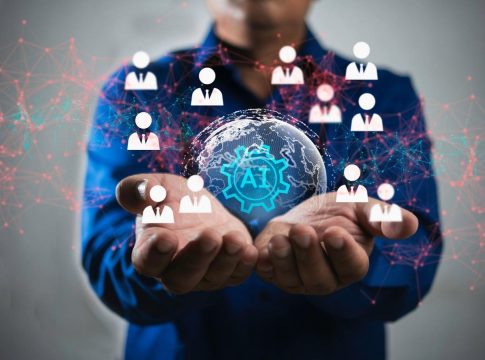The AI Job Revolution: Disruptions Ahead
In 2025, more than 77,000 positions have been slashed across major tech companies, driven by the increasing capabilities of artificial intelligence (AI). While the promise of job creation and retraining programs lingers, it often remains unfulfilled. As we delve into how AI is reshaping the workforce, the divide between optimism and pessimism about its effects has never been clearer.
The Reality of Job Losses
Tech giants like Microsoft and IBM have made headlines for their recent layoffs, with 6,000 and 8,000 job cuts respectively. Many roles—such as software engineers, HR professionals, and customer service agents—are being automated as AI technologies like machine learning and natural language processing become mainstream.
According to the Trueup Tech Layoff Tracker, an alarming trend is emerging: an average of 495 workers per day have lost their jobs this year due to AI advancements. This figure represents a slight decrease from previous months, but it still highlights the urgency of the situation. A survey indicates that 14% of workers may already have experienced displacement by AI, suggesting that this trend is widespread.
New Opportunities or Just Empty Promises?
Amidst the layoffs, there’s cautious optimism about job creation in other areas. The World Economic Forum’s 2025 Future of Work report suggests growth in sectors like delivery, construction, and nursing—fields where human workers are still essential due to persistent labor shortages. However, the creation of new roles has not yet materialized at the scale or speed needed to counterbalance those being lost.
Many companies have publicly committed to retraining programs. For example, Ikea announced that laid-off call center workers could transition to roles as interior design advisors. Yet, such examples are few, raising concerns about whether these programs can effectively prepare displaced workers for new careers.
A Call for Strategic Preparedness
Advanced economies appear ill-equipped to handle the rapid changes thrust upon them as AI takes center stage. The majority of roles at risk are either entry-level or low-skilled, disproportionately affecting economically disadvantaged groups. Judging by recent governmental actions, there’s a lack of coherent strategies to tackle the impending job crisis.
While the tech sector has fueled these issues, regulators are still debating the best paths to mitigate displacement. In the US, discussions focus on the regulation of AI to create accountability, while legislators in the UK and Europe aim to ensure transparency in AI practices, especially regarding copyright issues that may impact the creative sector.
Navigating Tomorrow’s Workforce
The introduction of AI into everyday work isn’t just a tale of automation; it’s about adaptation. The coming landscape demands a strong emphasis on skills that machines cannot replicate. Leadership, communication, and interpersonal skills are becoming increasingly valuable as we transition into an era where AI handles repetitive tasks.
For businesses, the focus should be on integrating AI to enhance human capabilities rather than replacing them outright. Investing in ongoing training and workforce transition is vital to ensure teams can thrive alongside AI technologies.
Conclusion: Time for Action
As we stand on the brink of what some describe as the most significant disruption to work since the Industrial Revolution, it is paramount for individuals, companies, and governments to act decisively. The balance between opportunity and displacement hangs in the air, but with the right strategies and investments, we can craft a future where humanity and technology coexist productively.
The conversation about AI’s impact on jobs is only just beginning—but the clock is ticking.

Writes about personal finance, side hustles, gadgets, and tech innovation.
Bio: Priya specializes in making complex financial and tech topics easy to digest, with experience in fintech and consumer reviews.

